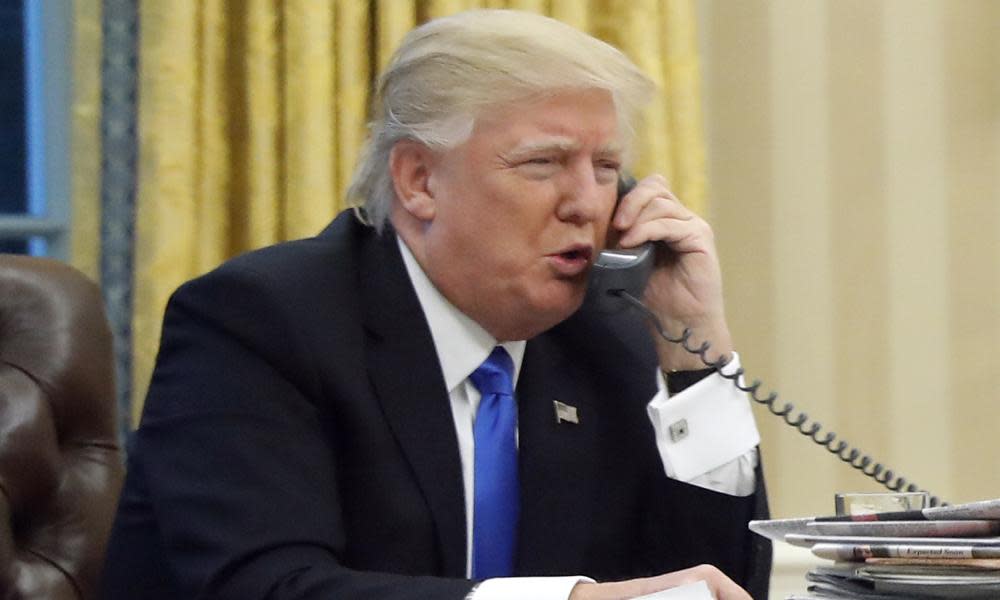US shutdown: White House phone message blames Democrats

Members of the public phoning the White House during the US government shutdown are being played a recorded message blaming congressional Democrats for the fact that their call cannot be taken.
People calling the White House telephone comment line 202-456-1111 received the following recorded message:
Thank you for calling the White House. Unfortunately, we cannot answer your call today, because congressional Democrats are holding government funding, including funding for our troops and other national security priorities, hostage to an unrelated immigration debate. Due to this obstruction, the government is shut down. In the meantime, you can leave a comment for the president at www.whitehouse.gov/contact. We look forward to taking your calls as soon as the government reopens.
@jaketapper I didn't believe it. So I called. @WhiteHouse comment line recording pic.twitter.com/WxlS9PUrd0
— Favian Quezada (@FavianQuezada) January 20, 2018
A US government shutdown is triggered when Congress fails to pass funding for government operations and agencies, but the effects exclude those that are deemed “essential”. Defence workers, the work of the Department of Homeland Security, and the FBI are usually included in that “essential” category, making the message’s reference to troops and national security even more controversial.
What is a government shutdown?
When the US Congress fails to pass appropriate funding for government operations and agencies, a shutdown is triggered. Most government services are frozen, barring those that are deemed “essential”, such as the work of the Department of Homeland Security and FBI. During a shutdown, nearly 40% of the government workforce is placed on unpaid furlough and told not to work. Many, but not all, are non-defense federal employees. Active duty military personnel are not furloughed.
Why is the government poised to shut down?
Members of Congress are at an impasse over what should be included in a spending bill to keep the government open. Democrats have insisted any compromise must also include protections for the nearly 700,000 young, undocumented immigrants, known as Dreamers, who were brought to the US as children.
The Dreamers, who were granted temporary legal status under Barack Obama, were newly exposed to the threat of deportation when Donald Trump moved to rescind their protections in September.
Trump and Republicans have argued immigration is a separate issue and can be dealt with at a later time.
How common is a shutdown?
There have been 12 government shutdowns in the US since 1981, although ranging in duration. The longest occurred under Bill Clinton, lasting a total of 21 days from December 1995 to January 1996, when the then House speaker, Newt Gingrich, demanded sharp cuts to government programs such as Medicare, Medicaid and welfare.
The most recent shutdown transpired under Obama in 2013, pitting the president against the Republican-led House of Representatives. Republicans refused to support a spending bill that included funding for Obama’s healthcare law, resulting in a 16-day shutdown that at its peak affected 850,000 federal employees.
What would be the cost of a shutdown?
A government shutdown would cost the US roughly $6.5bn a week, according to a report by S&P Global analysts. “A disruption in government spending means no government paychecks to spend; lost business and revenue to private contractors; lost sales at retail shops, particularly those that circle now-closed national parks; and less tax revenue for Uncle Sam,” the report stated. “That means less economic activity and fewer jobs.”
Nearly 1 million people would not receive regular paychecks in the event of a shutdown. In previous shutdowns, furloughed employees have been paid retrospectively – but those payments have often been delayed.
Sabrina Siddiqui
The line normally offers callers the choice of a few automated options, about visiting the White House on a tour or finding out the postal address, before giving the option to leave a message for the president. It is usually staffed by volunteers who can relay messages to the president, and was briefly closed towards the end of the Obama administration, but reopened in February 2017 after the Trump administration came to power.

 Yahoo News
Yahoo News 
